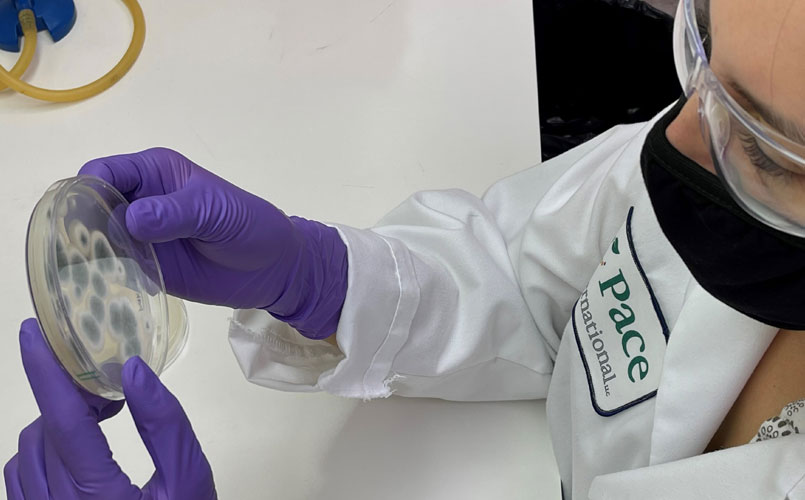Tips for a Successful Postharvest Fungicide Resistance Program
Postharvest fungicides are important tools for preventing decay, maintaining freshness, and ensuring the quality and market-value of apples. Application timing, coverage, and environmental conditions are key elements when it comes to fungicide efficacy. However, even when conditions are optimal and fungicide applications are executed perfectly, fungicide resistance can develop, reducing a fungicide’s ability to control certain decay such as blue mold (Penicillium expansum) during storage. Blue mold and gray mold (Botrytis cinerea) remain the most prevalent postharvest diseases of apples.
Since the introduction of pyrimethanil and fludioxonil, most major postharvest diseases have been successfully controlled. However, in recent years higher incidences of postharvest decays have been observed. This can be the result of several different factors. One of which is the appearance of fungicide resistance.
What is fungicide resistance?
Fungicide resistance is the buildup of resistant fungal populations with the use of repeated applications.
What causes fungicide resistance?
Genetic mutations arise naturally in plant pathogen populations. Some of these mutations result in isolates that are resistant to fungicides. Repeated use of an active ingredient can place selection pressure on mutations in the population. Continued application of the same active ingredient will kill sensitive strains of the pathogen population but will be ineffective against resistant strains. Eventually, resistant strains will dominate the pathogen population, leading to a loss of fungicide efficacy.
The Pace Postharvest Pathology lab has observed a correlation between decay incidences and a frequency of fungicide resistant strains. Resistant strains of fungi such as Penicillium species can recirculate between orchards and packinghouses through contaminated bins and can also accumulate in drench solutions. Therefore, there is an increased risk of spreading resistant spores by drenching.
Postharvest Tips for Managing Fungicide Resistance
Research shows that fungicide resistance is preventable if the correct, proactive measures are taken. After implementing the proper resistance management, if experiencing an unusually high decay load, testing is recommended. Below are recommendations on implementing a resistance management program:
- Monitor and Evaluate. Understanding resistance levels in the pathogen population helps with selecting the right fungicide and helps with monitoring the resistance management program. Monitoring fungicide resistance requires lab facilities and specialized skills and equipment. The Pace Pathology lab can isolate, identify, and test the isolates for resistance to any active ingredients.
- Rotate. Using the same fungicide season after season increases the chance of developing resistance. It is important to rotate postharvest fungicides of different chemical classes and modes of action, such as fludioxonil and pyrimethanil, on an annual basis to reduce the occurrence of fungicide resistance. Follow label rates and recommendations for effective treatment.
- Collaborate. Work with the grower to ensure fungicides with related chemistries are not being used in BOTH the field and the packhouse.
- Sanitize. Implementing a sanitation and hygiene program that includes rafters and walls helps to minimize resistant strains in the population.
- Ask. Learn about a fungicide’s mode of actions and class. Pace representatives are always willing to answer your questions.
For more information about postharvest best practices including implementing a successful fungicide resistant management program, please contact your local Pace representative or visit us at www.paceint.com.












